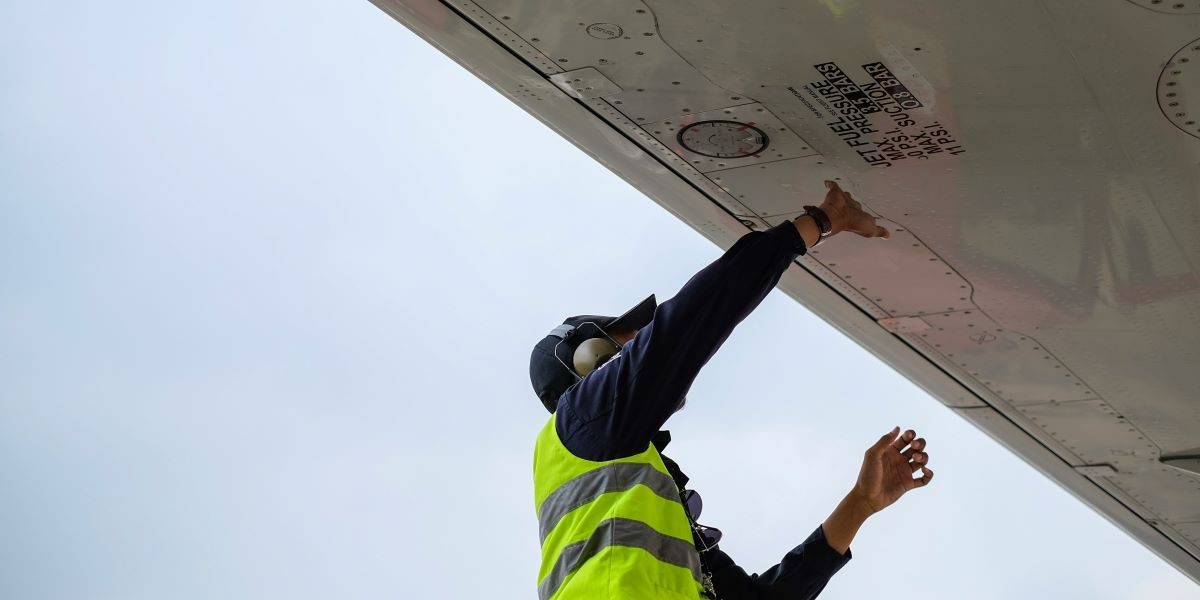The aviation industry is undergoing a crisis as it faces a growing shortage of skilled aircraft maintenance technicians. This issue has far-reaching implications for safety, operational efficiency, and the sustainability of air travel. Various factors, including an aging workforce, declining interest in aviation careers, and competition from other industries, have exacerbated this gap.
While initiatives are being implemented to address the problem, including scholarship programs, reskilling opportunities, and technological advancements, the shortage remains a pressing concern. Highlighting the rewarding aspects of aviation maintenance, fostering diversity, and leveraging modern tools are critical steps toward narrowing the gap. In the following sections, Evan McKeirnan delves into the complexities of this workforce issue, exploring its causes, consequences, and strategies to ensure the industry’s long-term viability.
Understanding the Workforce Gap
The aviation industry is facing a shortage of aircraft maintenance technicians, with recent data showing a growing gap between demand and supply. As the current workforce ages and retirement rates climb, fewer young professionals are entering the field to replace them. This imbalance poses a challenge to maintaining air travel’s safety and efficiency, which relies heavily on skilled technicians to keep aircraft operational and compliant with strict regulations.
One contributing factor to this shortage is the declining interest in aviation maintenance careers among younger generations. Many are drawn to alternative industries offering comparable pay but requiring less specialized training. The lengthy certification process and rigorous educational requirements can deter potential candidates from pursuing this profession. Without addressing these barriers, the gap is likely to widen, threatening the sustainability of the aviation sector.
Challenges Driving the Shortage
Several factors contribute to the growing shortage of aircraft maintenance technicians, making it a multifaceted issue. One key challenge is the complex certification process required to enter the field. While essential for ensuring safety and compliance, the time and financial investment needed to complete these certifications often discourage prospective candidates. Aviation maintenance programs have seen declining enrollment in recent years as younger individuals gravitate toward industries perceived as more accessible or innovative, such as technology or automotive sectors.
Competition with other industries also plays a significant role. Fields like manufacturing and energy often attract skilled labor with similar technical abilities, offering competitive wages and benefits with fewer regulatory hurdles. This dynamic has left the aviation sector disadvantaged in recruiting and retaining talent. Without strategic efforts to make the profession more appealing, the industry risks losing ground to these competing fields, further exacerbating the labor shortage.
Effects on the Aviation Sector
The technician shortage is already creating ripple effects across the aviation industry. Airlines face operational delays and higher maintenance costs as the demand for skilled workers outpaces supply. This can lead to longer turnaround times for aircraft inspections and repairs, disrupting flight schedules and passenger experiences. Smaller aviation businesses, including regional carriers, are particularly vulnerable, as they often struggle to compete with larger organizations for the limited talent pool.
Safety concerns are another pressing issue. With fewer technicians available, the workload on existing staff increases, heightening the risk of errors or overlooked maintenance issues. Regulatory compliance becomes more challenging under such circumstances, potentially jeopardizing the industry’s high safety standards.
Current Solutions and Initiatives
To address the shortage, various organizations are launching initiatives to attract and retain talent. Collaborations between airlines, aviation schools, and technical colleges are gaining traction, with scholarship programs and apprenticeship opportunities to ease aspiring technicians’ financial and educational burdens. Such efforts draw fresh talent and help students gain hands-on experience, making them job-ready upon graduation.
Reskilling and upskilling programs are also becoming more prominent. Employers invest in their workforce by offering advanced training in specialized areas like avionics and composite materials. This boosts employee retention and ensures the workforce evolves with the industry’s technological advancements. Government incentives, such as grants or tax breaks for companies that invest in workforce development, have further bolstered these efforts, creating a more supportive ecosystem for addressing the labor gap.
Technology’s Role in Mitigating Challenges
Technological innovations are reshaping how the aviation industry approaches maintenance and workforce challenges. Predictive maintenance systems powered by artificial intelligence are reducing the frequency of unscheduled repairs by identifying potential issues before they arise. These systems allow technicians to focus on critical tasks, optimizing their time and reducing operational bottlenecks. Similarly, automation in routine inspections is lightening the workload, making the existing workforce more efficient.
However, technology alone cannot replace the expertise and judgment of skilled technicians. While automated tools enhance productivity, the human element remains indispensable when navigating complex repairs or interpreting nuanced maintenance data. As the industry continues to adopt advanced tools, the emphasis must remain on training technicians to work alongside these technologies effectively, ensuring a balance between innovation and human expertise.
Inspiring Future Generations
Promoting aviation maintenance as a rewarding career is vital for the next generation of technicians. Efforts to engage younger audiences, such as hosting career expos and partnering with high schools, are helping to spark interest in the profession. Highlighting the long-term benefits—such as job stability, competitive salaries, and opportunities for global travel—can make the field more appealing to those exploring career paths.
Diversity-focused initiatives are also gaining momentum, with organizations actively working to attract women and underrepresented groups to the field. The industry can tap into a broader talent pool by fostering inclusive environments and offering mentorship programs. Long-term success will require a collective commitment from educational institutions, industry leaders, and policymakers to ensure the aviation workforce of tomorrow is equipped to meet the challenges ahead.
Published by Iris S.









